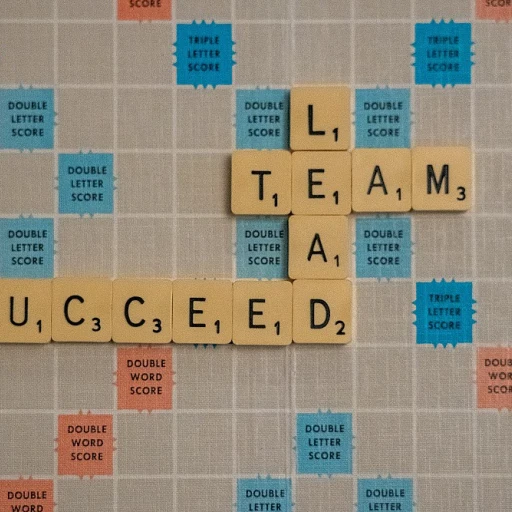
Understanding the Role of C-Suite in Team Support
Perceiving the Impact of C-Suite on Team Dynamics
At the top of the pyramid, the C-Suite plays a pivotal role in shaping how teams feel supported within an organization. Their actions trickle down and influence everything from morale to productivity. It's a bit like tuning a well-crafted instrument; every move by the leader can set the tone for harmonious results, or discord if not handled sensitively. {{ keywords }} like leadership strategy and managerial communication form the core tools for C-Suite executives in fostering a healthy team environment. When C-Suite individuals prioritize team engagement, it sends a strong message about the organization’s values and can significantly boost team morale. By actively participating in setting clear objectives, promoting transparency, and offering constructive feedback, C-Suite members strengthen the foundation of the support structure. From a personal perspective, I've had the opportunity to work closely with senior executives, and I've seen firsthand the difference a good leader can make. The ones who succeeded were those who weren't afraid to get involved and genuinely cared about the individuals in their teams. This human touch is echoed in what we discuss in our post on leading teams effectively, a read that dives into how strategic leadership can yield sustained success. Through these actions, C-Suite professionals convey respect and trust, key ingredients for a team-driven work environment. It's both an art and science to balance company goals with employee welfare. A leader who recognizes this can cultivate a thriving workplace ecosystem where everyone feels valued and motivated to contribute to the bigger picture.Building a Culture of Open Communication
Fostering Transparent Dialogue
Creating a space where team members feel heard and valued is like planting seeds for a thriving garden. Open communication isn't just about talking; it's about listening and understanding. When C-suite leaders actively engage in conversations with their teams, they lay the groundwork for trust and collaboration. This means having regular check-ins and feedback sessions that allow everyone to voice their thoughts and concerns.
One effective approach is to implement an open-door policy. This encourages employees to share their ideas or issues without fear of judgment. A CEO once shared how this practice helped her identify a bottleneck in their production process, which was resolved quickly thanks to an employee's suggestion. It's these kinds of interactions that can lead to meaningful improvements and innovations.
Encouraging Feedback Loops
Feedback loops are essential for continuous improvement. They help teams understand what’s working and what needs tweaking. C-suite executives can set the tone by being receptive to feedback themselves. When leaders demonstrate that they value input from all levels, it creates a culture where feedback is not only welcomed but expected.
One way to do this is by conducting anonymous surveys or suggestion boxes, which can provide insights into team morale and operational efficiency. This method was used by a tech company to uncover employee concerns about work-life balance, leading to policy changes that improved overall job satisfaction.
Promoting Cross-Departmental Collaboration
Breaking down silos and encouraging departments to work together can lead to innovative solutions and a more cohesive organization. C-suite leaders can champion cross-departmental projects and initiatives that require teams to collaborate and share expertise.
Consider the example of a retail company that brought together its marketing and IT teams to develop a new e-commerce platform. The collaboration not only sped up the development process but also resulted in a product that met both technical and customer experience goals. This kind of synergy is a testament to the power of open communication and collaboration.
For more insights on boosting team support and collaboration, you can explore the top 10 ways to boost team support and collaboration.
Empowering Teams Through Delegation and Autonomy
Granting Teams Freedom to Succeed
In the world of C-Suite executives, balancing leadership and empowerment is paramount for fostering independence among teams. Let's admit it, holding the reins tightly can be tempting, especially when stakes are sky-high. However, empowering your teams with autonomy and the ability to make decisions can unlock their full potential, transforming how your business grows and innovates.
Why does this work so well? Here's the secret: autonomy in the workplace doesn't just boost motivation and morale—it improves performance. When teams are trusted to steer projects, it sparks creativity and initiative. They become more than just task executors but innovators who actively seek solutions. This shift fosters an environment where your business not only adapts to changes but also thrives.
Think about when you've seen this done right. Perhaps a colleague handed over a major project with minimal oversight. Chances are, the team not only met expectations but surpassed them, injecting life and vigor into their work. It's a great way to build a solid foundation of trust and mutual respect.
Of course, let's keep it real. Handing over the baton isn't about abdicating your role or leaving teams to flounder in complexity. Instead, offer guidance and establish a clear vision. Define goals and parameters, then step back slightly to allow teams to flex their muscle. This gives them the confidence that their input is valued and sparks an environment of innovation and trust.
Remember, using empowerment as a tool doesn't just serve the team. It strengthens the entire organization. When teams feel supported, both autonomy and responsibility go hand in hand, boosting productivity, and ultimately driving success. Want to learn more about how effective team support correlates with an impactful business strategy? Check out the insights on creating open communication channels here to take your leadership to a new level.
Providing Resources and Training for Team Development
Boosting Team Potential with the Right Tools
When it comes to building a strong team, providing the right resources and training is like giving them the fuel they need to soar. It's not just about handing over tools but ensuring they know how to use them effectively. Think of it as setting the stage for your team to shine, where each member feels equipped and confident to tackle their tasks.
Investing in Skill Development
Training isn't just a one-time event; it's an ongoing commitment to growth. Encourage continuous learning by offering workshops, seminars, and online courses. This not only enhances their skills but also boosts morale and engagement. When employees see that the company invests in their development, they feel valued and are more likely to contribute positively.
Technology as an Enabler
In today's fast-paced environment, technology plays a crucial role in team success. Equip your teams with the latest tools and software that streamline processes and enhance productivity. Whether it's project management software or communication platforms, having the right tech at their fingertips can make all the difference.
Creating a Supportive Environment
Beyond resources and training, fostering a supportive environment is essential. Encourage a culture where team members feel comfortable seeking help and sharing ideas. This not only builds trust but also encourages innovation. Remember, a supportive team is a successful team.
By focusing on these areas, C-suite leaders can create a thriving environment where teams are not just supported but empowered to achieve their best.
Recognizing and Rewarding Team Achievements
Celebrate Wins and Boost Morale
Recognizing and rewarding team achievements isn't just about handing out plaques or bonus checks. It's about fostering a motivational environment where every success story is a stepping stone for future growth. As a C-suite executive, your words of recognition carry weight and can drive a ripple effect throughout your organization. Imagine speaking directly to your team after they've reached a milestone. "I'm genuinely proud of what you've accomplished," you might say, reflecting genuine appreciation on your face. This authentic acknowledgment fosters loyalty and a motivational atmosphere. But recognition requires some creative thinking. Here’s what you can consider:- Personalized Recognition: Individuals thrive on different types of acknowledgment. While some might appreciate public applause, others might prefer a quiet meeting where you acknowledge their hard work. Understanding your team members' preferences demonstrates you value their contributions in a meaningful, personal way.
- Spontaneous Celebrations: Surprise treats like impromptu luncheons or celebratory gatherings after a project wraps up not only mark a job well done, but also infuse energy and surprise into the team's routine.
- Career Development Opportunities: Offer development courses or leadership roles as a way to reward outstanding performance. These opportunities serve as long-term investments in your talent pool, signaling a commitment to their growth.
- Peer Recognition Programs: Encourage a culture where teammates recognize each other's efforts. When appreciation flows among peers, it strengthens bonds and enhances teamwork.
Navigating Challenges in Team Support
Overcoming Obstacles in Team Support
Every executive knows that supporting a team isn't always a walk in the park. There are hurdles to jump and bumps in the road. But with the right mindset and strategies, these challenges can become stepping stones to success.
One common challenge is the resistance to change. Teams can be set in their ways, and introducing new methods or systems can meet with pushback. This is where building a culture of open communication becomes vital. By fostering an environment where team members feel heard and valued, executives can ease the transition and encourage buy-in.
Another stumbling block can be the struggle to balance delegation and control. It’s tempting to micromanage, especially when stakes are high. But empowering teams through delegation and autonomy can lead to greater innovation and efficiency. Trusting your team to take ownership of their tasks not only boosts morale but also enhances productivity.
Resource constraints can also pose significant challenges. Providing resources and training for team development is essential, but it can be difficult when budgets are tight. Prioritizing investments in training and development can pay off in the long run, as a well-equipped team is more capable of overcoming obstacles and achieving goals.
Lastly, recognizing and rewarding team achievements can sometimes fall by the wayside amidst the hustle and bustle of daily operations. Yet, acknowledging accomplishments is crucial for maintaining motivation and morale. Simple gestures of appreciation can go a long way in reinforcing a positive and supportive team culture.
By addressing these challenges head-on and implementing strategies discussed in previous sections, C-suite executives can foster a supportive environment that drives success and innovation.














